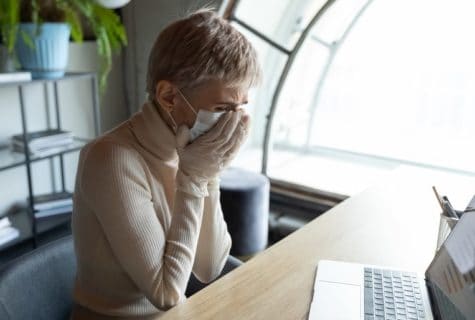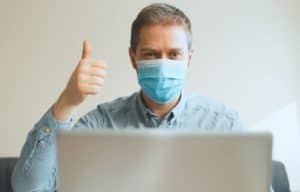
QUESTION: During the COVID-19 shutdown, we continue to see patients in the office on a reduced schedule. Now, we are getting ready to bring back the majority of our staff and ramp up patient office visits. We are concerned that the increased interactions could result in an employee testing positive for coronavirus. Our small practice does not have an HR department. Can you provide some suggestions on how we should approach employee health and absences during the COVID-19 pandemic?
Question from Houston, TX Subscriber
ANSWER: Knowing your employee legal and financial obligations will protect your practice. There are a number of things you should do when an employee shows signs of COVID-19 or tests positive for the virus.
It’s important that you clearly and accurately convey your practice policies to all staff BEFORE a situation arises. This reduces employee fears of the unknown, and ensures everyone is on the same page.
To help your practice properly manage employee liability during and after COVID-19 exposure, use the following checklist prepared by healthcare attorney and human resources expert Kelly Holden.
Inform, Sanitize, Record When Employee Tests Positive
- Notify Contacts: Inform patients who worked with the employee as well as other employees that someone in the workplace has tested positive. Do not disclose the employee’s name. It is okay for the infected worker to choose to tell their coworkers and disclose his/her identity.
- Disinfect Affected Areas: Sanitize and deep clean areas where the employee may have been. You can consider closing for a day or so to let any active virus die, but that may depend on your business needs.
- Self-Isolate Symptomatic Employees: If a staff member shows any signs of illness while at work, he should leave immediately. If signs appear outside of work, inform your employees that they should not report to work and instead virtually notify their supervising manager of their situation.
- Record Virus Contraction: If you believe that an employee has contracted the virus in the workplace, you must record the incidence per OSHA guidelines.
Know, Notify Employee of Sick Rights, Pay
- Pay Sick Leave If Under FFCRA: If you are subject to the Families First Coronavirus Response Act (FFCRA), you will have to provide paid sick leave pursuant to the Act.
- Consider WC, Unemployment Filing: Check your state’s worker’s compensation (WC) laws as they pertain to COVID-19. Or individuals who do not have paid sick time, may be able to apply for unemployment for any weeks out of work.
- Large Groups: Cover Absence: If your practice is part of a large group (50 or more employees) and the employee meets certain tenure requirements, you will need to provide sick pay. FMLA counts COVID-19 illness counts as a covered absence. Eligible employees include those who have worked more than 12 months in the past 7 years and worked 1,250 hours in the past 12 months. You must submit the proper paperwork (Notice of Rights/Responsibilities and Healthcare Certification Form) within five business days. You should run FMLA concurrent with the employee’s sick/vacation or worker’s comp.
Educate, Remind Asymptomatic Employees of Prevention Practices
- Encourage Self-Isolation: When employees are not at work, they should be isolating as much as possible. Every time they go out or interact with people, they risk becoming infected and/or spreading the virus.
- Reinforce Protective and Monitoring Measures: Remind workers about the proper and constant use of PPE, handwashing, sanitizing, etc. If you are not performing temperature checks in the office, consider adding this step of supervised and logged checks. If you are allowing self-reporting, remind workers that they need to monitor their temperature every day prior to work.
- Notify Employees of Call-in-Sick Policies: Inform your employees that if they develop any signs of coronavirus outside of work, they should not report to work and instead virtually notify their supervising manager of their situation.
- Post Educational Signs: To further educate employees, the CDC has numerous posters for displaying or distributing in workplaces.
For more answers to your essential COVID-19 employment questions, there is more expert advice available by attending Kelly’s online training “New COVID-19 Employment Rules: Had Off Legal Nightmares.” Kelly is a partner with DBL Law, a full-service law firm with offices in Cincinnati, Northern Kentucky, and Louisville. She leads the firm’s Employment and Labor law practice, representing and training private and public employers in all facets of employment law. Her expert session will walk you through each of the new COVID-19-related employer regulations and how you can use them to help your employees, AND protect your practice.



